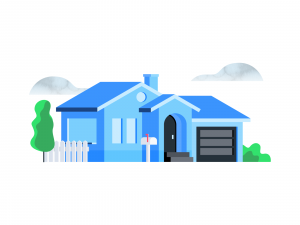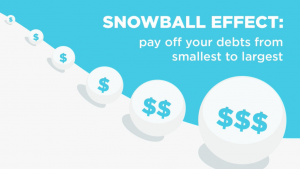Disclosure: Privacy Australia is community-supported. We may earn a commission when you buy a VPN through one of our links. Learn more.
What is a Bridging Loan?

Bridging loans are loans you take out to bridge a gap in your finances until you receive an actual loan.
They’re commonly used by people who want to finance a home purchase but don’t have enough money to do so on their own or with help from family and friends.
With the Australian economy in a spiral, debt may be a bad move. Are there ways of handling your situation without relying on borrowing? Ask this first before the question: What is a Bridging Loan?
Table of Contents:
- 🔱 Types of Bridging Loans
- 🔱 Borrowing Limits for Bridging Loans
- 🔱 How to Pick the Right Type of Bridging Loan for You
- 🔱 FAQs
Bridging Loan Explained
At a glance:
- Costs More Than Mortgages – Bridging loans are typically a lot more expensive than mortgages. Rather than for three decades, they’re usually offered for only a year, and can be given for businesses too:
- Business 👔 – These can be an important part of every business’s financial health. However, they can be tricky to navigate. Fortunately, there are many different types of loans available to small businesses, so it should be easy to find one that works for your company.
- Home 🏠 – You can use this bridging loan to pay for a home purchase, with that house backing the contract as an asset.
- Other 💫 – Many exist. For instance, to fund other big purchases, or to get yourself out of a cash crunch.
What is a Loan in General?

Depending on your financial goals and needs, you might be considering various options for financing your business.
That could include acquiring capital through a loan, or exploring other financing options such as a lease, business partnership or angel investment.
Loans are one of the most common ways people finance their businesses. They can be very useful in many circumstances and it was thought they were a necessary evil — if used wisely. Today, this seems less and less true but they are still popular.
Best Alternative to a Loan
All businesses need capital, which is short for “financial resources”, to operate. The best form of capital is the product or resource itself; for instance, if you are a farmer selling chickens directly to customers, your capital is your hens and the eggs they lay daily.
Another example of this would be having skills that are valuable or a computer to write blogs, for an example of my own capital.
However, if you need actual cash for some reason and have decided to go into debt, which is associated with mental health issues, you can raise money in many ways that don’t include saving, with the most common way being through borrowing.
Borrowing capital is the same as taking on debt, which is when you use credit to pay for something. For example, suppose you own a business that makes and sells sunglasses. You buy the raw materials to make the glasses with money you borrow from a bank.
The sunglasses are your inventory, and the bank is your creditor. The bank owns part of the inventory. When you sell the sunglasses, you pay the bank back with money you borrowed from the bank. A loan is when a bank gives you money for your business. In this form of debt, you agree to pay the loan back with interest. The amount you agree to pay depends on the type of loan you take out.
History of bridging loans

Bridging loans have been around since the dawn of time. Back in the day, people would often use communal loans to help them get through tough periods of time where they didn’t have enough money to buy everything they wanted.
These bridging loans were more like a gift of credit, and they were generally only good for one or two purchases. They were also frequently short-term, and people would often use them to help them make the purchase of a house, car, or other big expense.
Today, bridging loans are just as common but have evolved to meet the unique needs of clients. They’re now much more flexible and are commonly used for many different purposes. Bridging loans are a quick and easy way to get that big purchase, new home, or other goal off the ground. They can also help you get out of debt before you’ve built up a decent savings account or credit score.
Types of Bridging Loans
Real-estate

A bridging loan is a short-term loan you take out to bridge a gap in your finances until you receive an actual loan.
A common example of a person using a bridging loan to buy a home is someone who needs to put down a large down payment, but doesn’t have enough money saved up to afford a down payment large enough to qualify for a larger mortgage.
Someone who takes out a bridging loan can use it to contribute enough cash toward the down payment for a lower down payment mortgage, as well as making payments toward the mortgage for a few years.
For first-time homeowners looking to take the plunge into homeownership, a seasoned investor or an experienced real estate investor, a bridging loan can make all the difference – despite the mental costs we’ve mentioned already.
Whether you plan to buy a home as an investment property or for personal use, a bridging loan is necessary to cover the costs of purchasing real estate until you have enough money in hand to close on the property as well as pay off any other loans that you may have taken to finance your purchase.
Bridging loans are specifically designed for first-time real estate investors and seasoned investors who have cash reserves but no credit history. They offer qualified borrowers the opportunity to acquire extra funds until they are able access funds through other more conventional channels such as a bank loan or a mortgage with their existing credit score.
Common Types:
🏡 – Home equity line of credit (HELOC): This is the most common type of bridging loan and is useful when you need to borrow a small amount of money for a short period of time and are looking to fund other types of expenses.
🧱 – Home improvement loans: This is a type of bridging loan that is shorter-term and is often used to help fund a renovation project.
Business

The business bridging loan is a new type of credit that’s specifically designed for businesses as an alternative to the usual long-term, fixed-rate financing available to businesses.
It’s meant especially for smaller businesses who don’t qualify for traditional loans but still need capital to grow or start up their operations.
The business bridging loan is intended to help a small business get over a temporary cash crunch until the next payment comes in. Once the cash flow has increased, the lender will release the capital again so the business can continue growing and expanding.
Once again, a business bridging loan is a type of unsecured loan that’s available only to businesses. The loan amount is capped at $2 million and is only available for five years. It’s typically the type of loan that’s issued by a business partner or a trusted individual who’s willing to help you get over a cash crunch.
The principal amount of the loan is based on a percentage of the sales or profits of the business. The interest rate on a business bridging loan is usually higher than a regular loan because it’s unsecured — it doesn’t have any collateral backing it up. Therefore, the interest rate is usually very high.
The various types of bridging loans are dependent upon the purpose and length of time for which the loan is needed. The most common types are:
🌱 – Equipment loans: This is a type of bridging loan that typically is used to fund the purchase of a vehicle, machinery, or other large capital item.
🔱 – Crowdfunding – Crowdfunding refers to any type of funding in which small amounts of money from many people are used to fund a large project. There are a lot of different ways people are crowdfunding these days. Some of the most popular include reward-based campaigns, equity-based campaigns and debt-based campaigns.
⚰️ – Debt Financing – One of most common types of financing for small businesses is debt financing. This usually means that a bank or other financial institution extends you a loan. Debt financing is usually a long-term agreement. This means that you’ll have to pay back the loan plus interest over the course of a few years or even decades
💳 – Line of credit: A line of credit is a loan that allows you to borrow a specific amount of money at any given time.
Borrowing Limits for Bridging Loans

Borrowing limits for bridging loans are different depending on the type of loan you choose to take out.
When you take out a home equity line of credit (HELOC), you are given a certain amount of money that you can use for your bridging loan.
You can usually borrow up to 10% of the line of credit amount. The remaining 90% is usually your own property that you can use for your own expenses.
When you take out a home improvement or equipment loan, the amount you can borrow is usually based on the trade-in value of your current assets. Theoretically, if you had enough of your own assets to cover the loan amount, you could borrow enough to cover the purchase price of your new asset.
Repayment Schedule of Bridging Loans
During his attempt to acquire Twitter, a good deal of Elon’s actual cash was actually borrowed from others, including banks, who “bridged” the gap.
Bridging loans are meant to bridge gaps in your finances until you receive an actual loan. That means you’ll generally have to pay them back quickly. Generally speaking, you can use bridging loans for up to six months and repay them at any time.
If you have a 36-month mortgage, for example, you can take out a bridging loan for 12 months. Then, you can get an actual loan with a 10-year, 15-year, or 20-year repayment period.
If you use this loan to pay off your existing mortgage, you’ll technically have a bridging loan that has a different repayment schedule than the one you originally had.
☑️ Advantages of a Bridging Loan
- Short-term loan to fund large purchases – For example, someone who needs to make a large down payment on a home purchase but doesn’t have enough saved up. A bridging loan can allow them to make the down payment and pay for other large purchases while they save up for the down payment and closing costs.
- Helps you save money – If you need to fund a large purchase that takes a long time to pay off, a bridging loan can help you make the payment for a certain length of time. This allows you to get the item paid off and out of your home sooner.
- Can help you consolidate debt – Using a home equity line of credit (HELOC) or home improvement loan to make payments on other debt like credit cards or car loans can help you pay off that debt faster and consolidate it into one monthly payment.
❎ Disadvantages of a Bridging Loan
- Mental cost – Taking out a loan puts you into the mental state of relying on someone else.
- Limited protection – Home equity line of credit and home improvement loans are federally insured, but home equity line of credit (HELOC) borrowing is capped at £100,000.
- Could go into default – If you don’t make your payments on time, the entire credit line could go into default and the lender could take possession of your home.
- Could lose money – When you take out a home equity line of credit or home improvement loan, you are required to pay interest on the entire loan amount.
- May not be worth the risk – There are also a variety of other risks especially during a crazy economy in Australia.
How to Pick the Right Type of Bridging Loan for You
#1 Determine why you need a bridging loan – Was it to purchase a home and you need funds to make a down payment? Or were you simply facing a cash crunch and wanted to borrow money to pay off your bills?
#2 Understand your borrowing limit. Find out how much you can borrow on your bridging loan. Also, determine if your lender will require a cosigner.
#3 Determine your payment schedule – If you need funds for a short period of time, find out how often you have to make payments. If you need a longer loan, find out if your interest rate is fixed or variable.
#4 Choose your loan type – Now that you have figured out your borrowing limit and payment schedule, it’s time to choose a bridging loan type. Home equity line of credit loans are usually the most convenient, but they come with the highest interest rate. Home improvement loans are usually the shortest term and lowest rate, but they don’t help you save as much money.
#5 Compare different lenders and choose the one that gives you the best rate and terms – Now that you have figured out which type of loan you want to take out, it’s time to compare different lenders and decide which one offers the best terms.
#6 Sign the paperwork – Once you have chosen a lender, find out when you need to sign the paperwork and make sure you do so on time.
#7 Use your loan responsibly – After you have signed the papers, it’s important to use your loan responsibly. This means making your payments on time and keeping them as low as possible. It’s also important to protect your credit score by paying off any accounts that have high balances and have been opened in the past two years.
FAQs

What Are Reasons to Avoid Debt? ⭐
Bridging loans should be avoided if you want to get out of debt as soon as possible. I’ve already mentioned the debt snowball, which is one way to do this without borrowing.
Bridging loans are always going to have a repayment schedule that’s shorter than you would have on an actual loan. That means you’ll have to pay them off much faster than you would if you used a longer-term loan. Bridging loans are also automatically transferred from one account to another, so they show up in multiple places (similar to how credit cards work).
Which also means you can get charged multiple times for the same thing, which can increase your overall debt. They’re also less predictable than a loan you take out from a bank or other financial institution. So you have to be careful not to overspend or miss payments because you didn’t know when they would come due.
Are Bridging Loans Right For Your Small Business?
Whether a business bridging loan is right for your small business depends on your financial situation, your cash flow, and your needs. If you have a small cash flow, need some time to generate revenue, and can’t get a traditional loan from a bank, a business bridging loan might be a good option. It’s a short-term loan that helps bridge you until you have enough cash flow to pay it off.
A business bridging loan is not intended to be your only source of financing; it’s meant as an interim solution until you can get a longer-term loan. If a business bridging loan is right for you, it’s important to be financially responsible with the money you borrow. If your business doesn’t have the cash flow to repay the loan, it could put the future of your business in jeopardy.
What’s the Best Way to Apply?
There are a few ways to get a business bridging loan. First, you can apply directly to a lender. Second, you can apply for a business bridging loan through an online brokerage or an online lending marketplace.
Both options have pros and cons. Direct applications can be more efficient, but you have to be approved and submit an application, so it’s not a no-effort process. Online loan brokers or lending marketplaces are more convenient, but they do screening, review, and underwriting so you don’t have to do any work.
Conclusion 📘
Bridging loans are short-term loans you supposedly take out to bridge a gap in your finances until you receive an actual loan. They can be used to make purchases such as a home or vehicle, pay off debt, and cover expenses such as medical bills, taxes, or utility bills.
You can apply for a business bridging loan online and online brokers or online lending marketplaces offer access to a wide range of lenders. There are some requirements and limitations to these loans, so you need to know what you’re getting into before you apply.
You Might Also Like:





